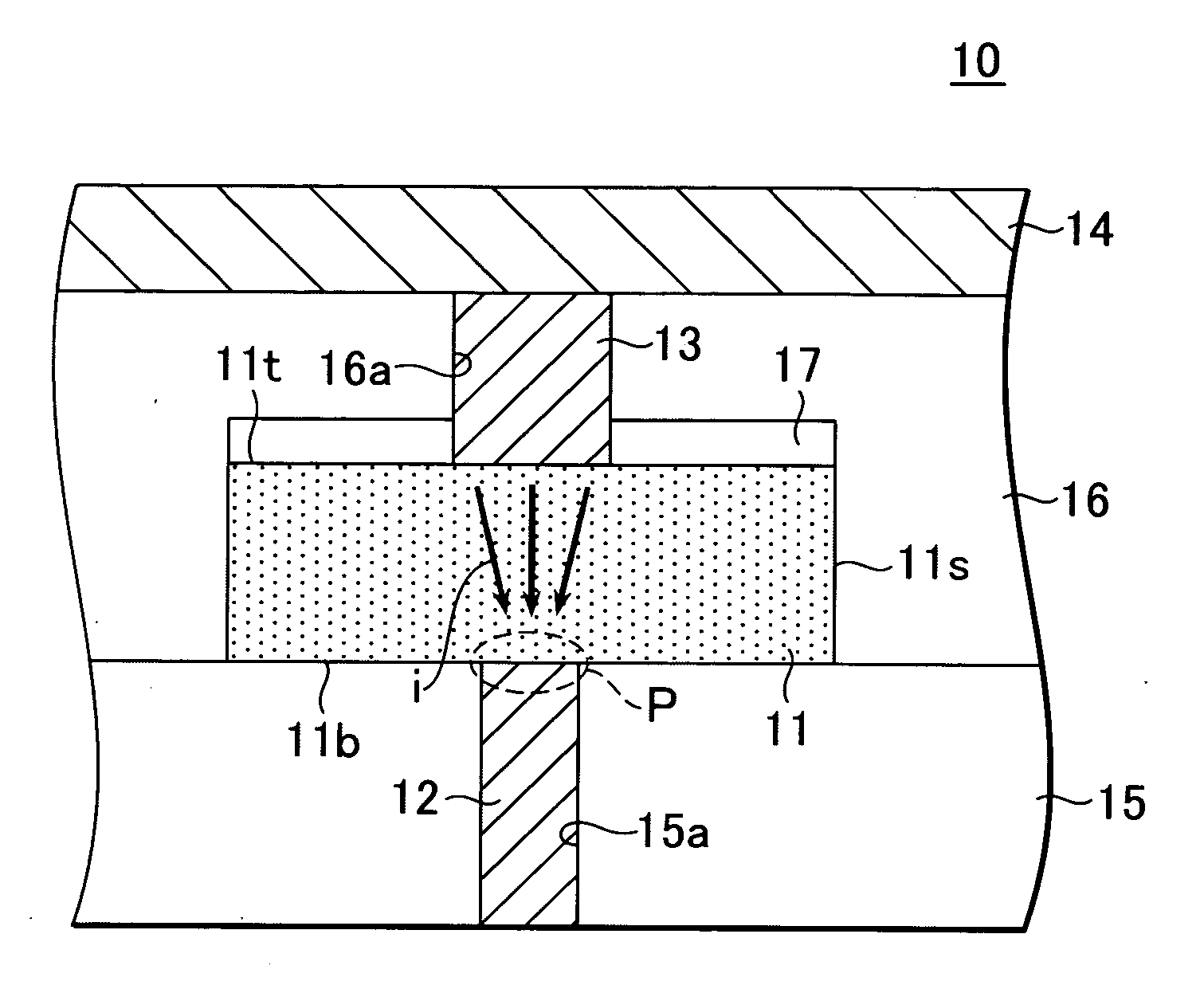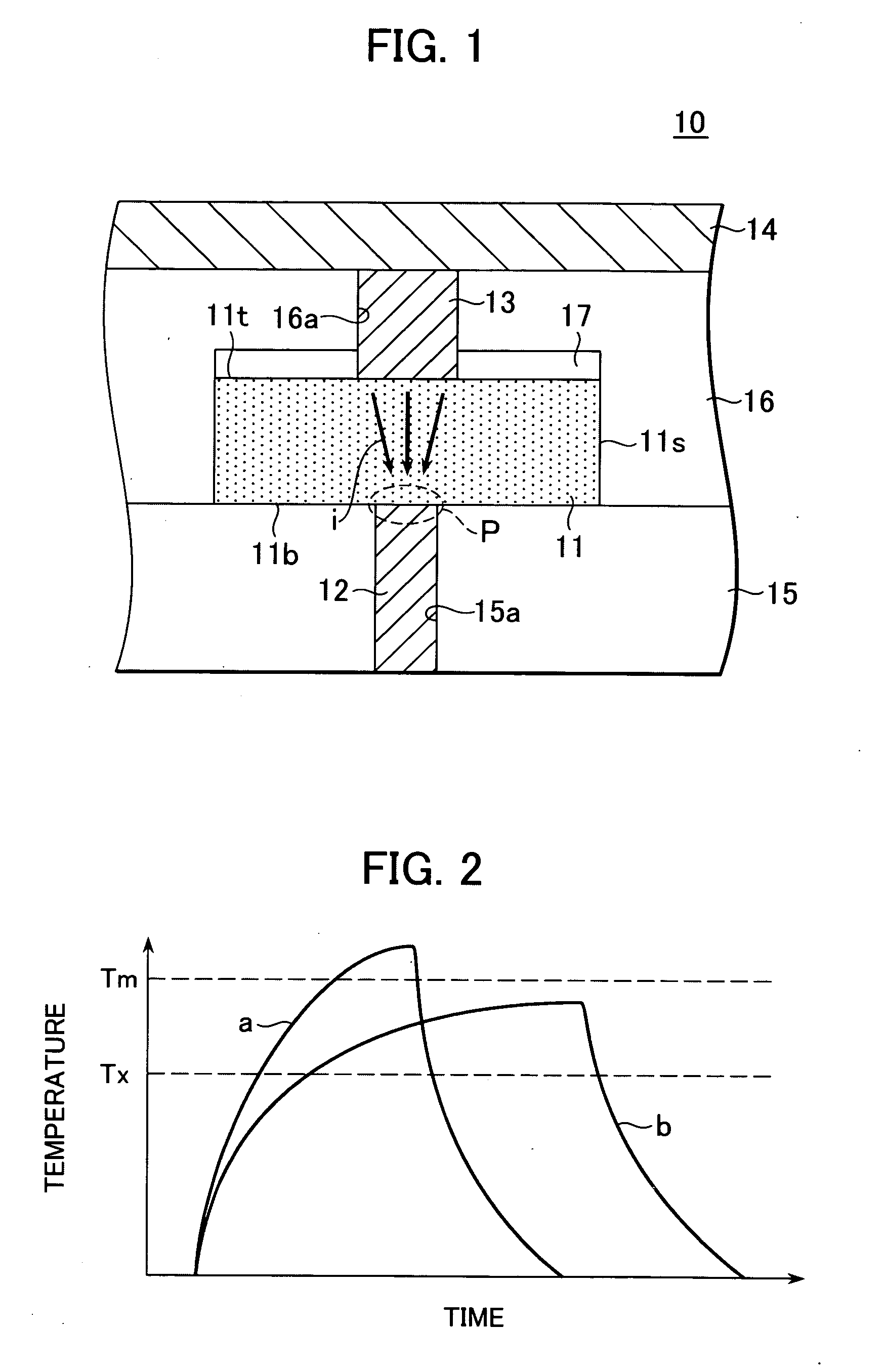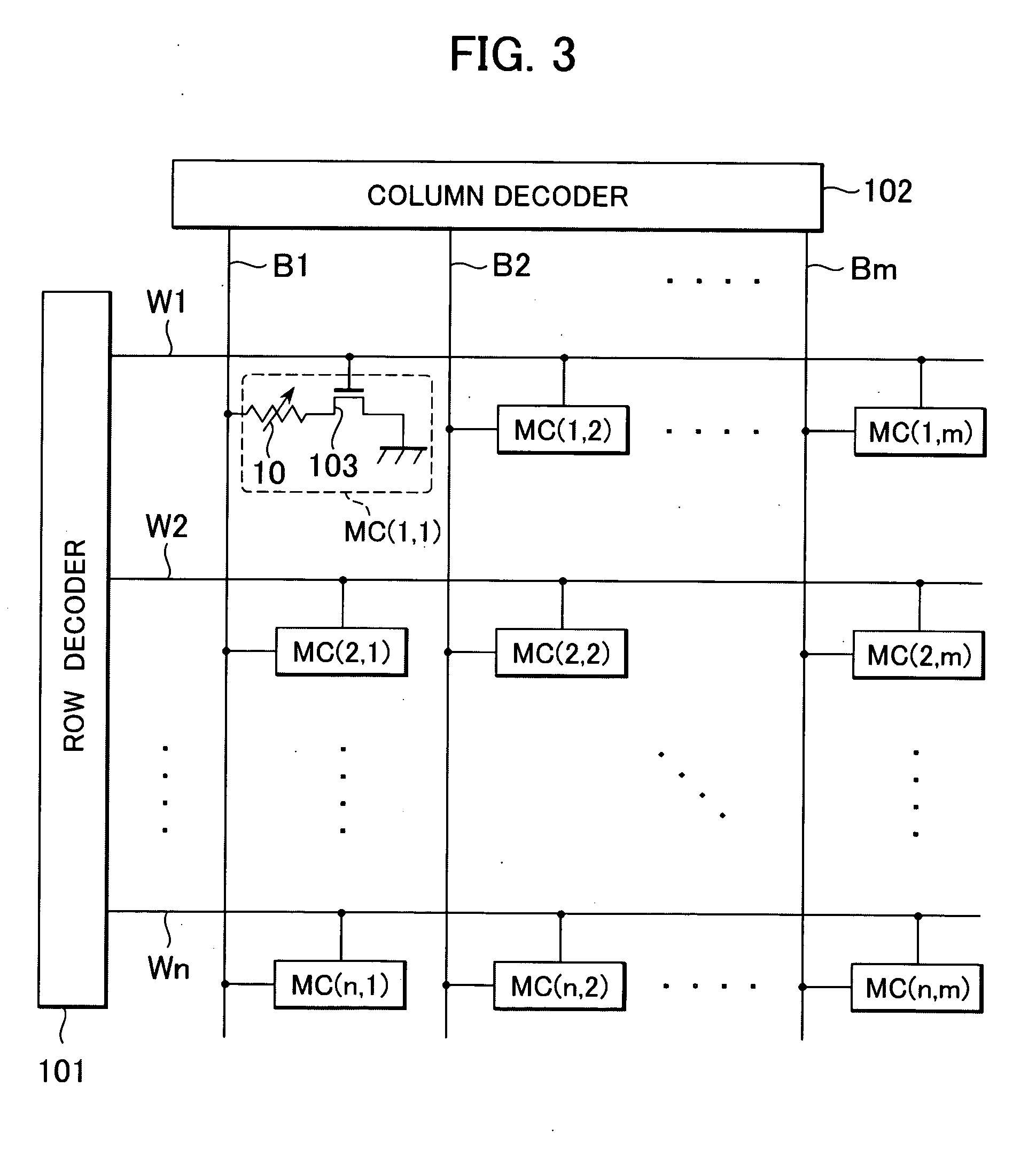Electrically rewritable non-volatile memory element and method of manufacturing the same
a non-volatile memory element, electric rewritability technology, applied in the direction of electrical equipment, semiconductor devices, instruments, etc., can solve the problems of reducing the electrical power consumption of the device, dram is volatile memory that loses stored data, and the limit of the device, so as to reduce the size of the contact area between the recording layer and the upper electrode, reduce the amount of damage sustained, and improve the etching rate
- Summary
- Abstract
- Description
- Claims
- Application Information
AI Technical Summary
Benefits of technology
Problems solved by technology
Method used
Image
Examples
first embodiment
[0097] This type of configuration makes it possible to even further decrease the amount of heat released to the side of the upper electrode 13, since the heat capacity of the upper electrode 13 decreases. A level of thermal efficiency higher than that of the first embodiment can thereby be obtained, and it becomes possible not only to further decrease the write current, but also to further increase the write speed.
[0098] The method for manufacturing the non-volatile memory element 20 according to the present embodiment will next be described.
[0099]FIG. 8 is a schematic sectional view showing the sequence of steps for manufacturing the non-volatile memory element 20.
[0100] By performing the same steps as those described using FIGS. 5 and 6, a through-hole 16a is formed in the second interlayer insulation film 16, after which the upper electrode 13 is formed with a thickness sufficient to fill a portion of the through-hole 16a as shown in FIG. 8. A buried member 21 is then formed wi...
fifth embodiment
[0113] The non-volatile memory element 50 according to a preferred fifth embodiment of the present invention will next be described.
[0114]FIG. 15 is a schematic sectional view showing the structure of the non-volatile memory element 50 according to a fifth preferred embodiment of the present invention.
[0115] As shown in FIG. 15, the non-volatile memory element 50 according to the present embodiment differs from the non-volatile memory element 10 according to the first embodiment in that sidewalls 51 are formed in the inner wall of the through-hole 16a, and the upper electrode 13 is provided in the region 51a surrounded by the sidewalls 51. Since other aspects of this configuration are the same as in the non-volatile memory element 10 according to the first embodiment, the same reference symbols are used to indicate the same elements, and descriptions of these elements are not repeated.
[0116] The sidewalls 51 are not subject to any particular limitations insofar as they are compose...
PUM
 Login to View More
Login to View More Abstract
Description
Claims
Application Information
 Login to View More
Login to View More - R&D
- Intellectual Property
- Life Sciences
- Materials
- Tech Scout
- Unparalleled Data Quality
- Higher Quality Content
- 60% Fewer Hallucinations
Browse by: Latest US Patents, China's latest patents, Technical Efficacy Thesaurus, Application Domain, Technology Topic, Popular Technical Reports.
© 2025 PatSnap. All rights reserved.Legal|Privacy policy|Modern Slavery Act Transparency Statement|Sitemap|About US| Contact US: help@patsnap.com



